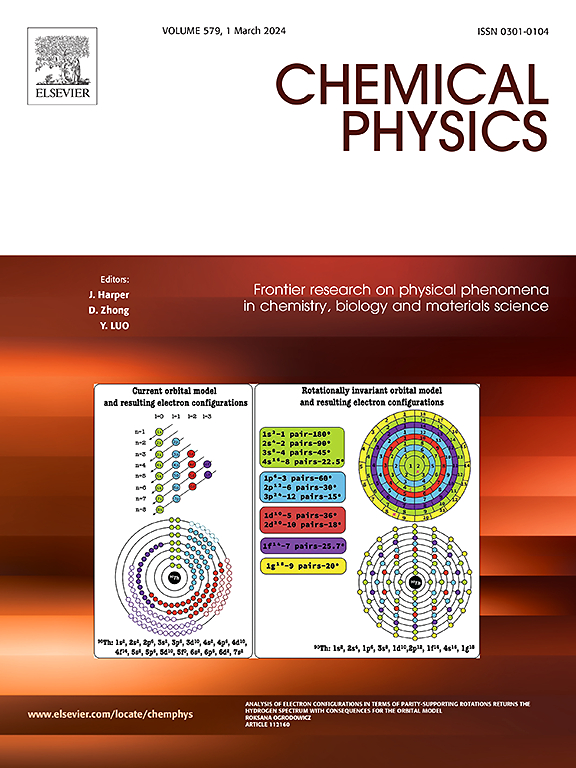基于ReaxFF的丁酸乙酯-氧化铜体系相互作用及氧化还原动力学研究
IF 2.4
3区 化学
Q4 CHEMISTRY, PHYSICAL
引用次数: 0
摘要
以丁酸乙酯(C6H12O2)为原料制备生物柴油,在电子垃圾回收利用中具有良好的发展前景。但其在冶炼过程中的化学机理尚不清楚。本研究采用反应力场分子动力学(ReaxFF MD)方法研究了C6H12O2在CuO环境下的高温转化机理。结果表明,C6H12O2在高温下发生了多步转化。通过分析产物分布和绘制化学反应网络,阐明了反应机理。具体来说,C6H12O2经过C6H12O2→C2H4/C3H7COOH→CO/H2O的转化。还原产物与CuO相互作用形成Cu- oh结构,将CuO还原为Cu。研究还定量考察了氧系数对氧化还原反应的影响。随着它的增加,丁酸乙酯的分解速率也随之增加。在某一点之后,产品生成路径的比例没有显著差异。本文章由计算机程序翻译,如有差异,请以英文原文为准。

Investigation on the interaction and redox kinetics of the ethyl butyrate‑copper oxide system based on ReaxFF research
Biodiesel's pyrometallurgy exhibits good development prospects in e-waste recycling, with ethyl butyrate (C6H12O2) potentially serving as a biodiesel. However, its chemical mechanism in the smelting process is still unclear. In our research, the reactive force field molecular dynamics (ReaxFF MD) method is utilized to study the high-temperature conversion mechanism of C6H12O2 in the CuO environment. The results reveal that C6H12O2 undergoes multi-step conversion at high temperatures. The mechanism was elucidated by analyzing the product distribution and mapping the chemical reaction network. Specifically, C6H12O2 undergoes the conversion of C6H12O2 → C2H4/C3H7COOH → CO/H2O. The reductive products interact with CuO to form a Cu-OH structure, reducing CuO to Cu. The study also quantitatively examines the impact of the oxygen coefficient on the redox reaction. As it increases, the decomposition rate of ethyl butyrate increases as well. After a certain point, there is no significant difference in the proportion of product generation paths.
求助全文
通过发布文献求助,成功后即可免费获取论文全文。
去求助
来源期刊

Chemical Physics
化学-物理:原子、分子和化学物理
CiteScore
4.60
自引率
4.30%
发文量
278
审稿时长
39 days
期刊介绍:
Chemical Physics publishes experimental and theoretical papers on all aspects of chemical physics. In this journal, experiments are related to theory, and in turn theoretical papers are related to present or future experiments. Subjects covered include: spectroscopy and molecular structure, interacting systems, relaxation phenomena, biological systems, materials, fundamental problems in molecular reactivity, molecular quantum theory and statistical mechanics. Computational chemistry studies of routine character are not appropriate for this journal.
 求助内容:
求助内容: 应助结果提醒方式:
应助结果提醒方式:


